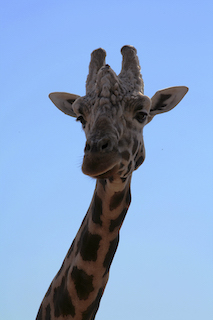Blood Circulatory System Of Giraffes Revealed
Giraffes tower and journey the savannas, grasslands, and plains of eastern and southern Africa. They are the tallest living animals on earth and not surprisingly have significant physical features. Its feet are six feet long and its tongue 21 inches long. And its other body parts and organs are equally huge. The average total capacity of the giraffe’s lungs is six times that of a human’s. A person’s average total lung capacity is 1.59 gallons, whereas a giraffe can hold 12 gallons of air. So, one can imagine the enormity of these giant beings. But it is the length of its neck and legs that catches people’s attention and poses questions.
Long physical features
People often wonder why giraffes have such long necks and legs and how the heart sends blood all the way up to its head and brain through the long neck and down its legs when it stands tall up to 5 meters high. Although the question of why such long neck and legs has been unknown, how the blood circulates, have been answered. Also, there is a myth that because the distance between the heart and the brain as well as to the legs is a full 6 feet, giraffes often suffer from hypertension caused by the relentless uphill and downhill climb of the blood. But they don’t. There are a few ways that it can achieve this.
Puzzling long neck
First of all, the giraffe’s heart is one of the most powerful of that of all the mammals. Research reveals that giraffes have a supercharged and a small heart that is different than other similar animals. The 2 feet long heart weighs around 12 kg and is incredibly powerful to pump the blood all the way up its long neck and legs. Moreover, the heart has evolved to have a small radius and thick muscle walls, giving it high power. Also, a series of valves located in the blood vessels that lead up the neck prevent the blood from flowing back to the heart in between beats. The walls of the vessels also thicken as the neck grows longer with age, to avoid rupturing under pressure.
Puzzling long legs
How the heart maintains the blood circulation in the giraffe’s legs was a constant thorn in many a scientist’s and researcher’s minds. But thanks to the studies done, we have the answer now. The muscle and skin around the legs fit tightly, increasing the pressure of the blood in the lower body, stopping it draining down. The layer of tight skin on its legs not only maintains pressure but also prevents the vessels from bursting. Furthermore, if the giraffe were to get cuts, this thick skin and inner fascia would prevent blood pooling and excessive bleeding.
High blood pressure
When the giraffe bends down or lowers its head to drink water, the force of gravity is not only reduced but also reversed. Otherwise, the blood that is pumped towards the brain at high pressure possibly may lead to brain damage. But the harder pumping to get all the blood so far uphill results in high blood pressure. Therefore, the blood pressure of giraffe is exceptionally high, when compared to other animals. According to zoologists, the blood pressure of an adult giraffe’s heart can reach roughly twice as that of a human being. But in their heads, the blood pressure remains the same as a human’s. Giraffes can maintain low pressure in their heads irrespective of whether they are sipping water at ground level or chomping leaves from the tall trees. The reason?
Complex regulatory system
Luckily for the giraffe, nature has provided them with a complex pressure-regulation system that controls blood flow. In their brain, there are blood vessels that connect to the convoluted valves or blood sponge in the large neck veins. They are meant specifically to reduce the blood pressure before it enters the brain. Their function is to stop the blood from flowing backward when it dips its head. It is called the Rete mirabile. This amazing organ collects the blood at the skull base and regulates the blood quantity released into the brain. It prevents the head from swelling when it bends over. And it works in reverse as well. When the giraffe quickly lifts its head, the organ stops blood from draining out the brain quickly, saving the animal from fainting. If humans tried that trick, they would pass out. Besides, the walls of the dense blood vessels prevent leakage and expand and shrink to adjust to blood volume. The collagen fibers are inflexible that help to keep the blood moving, which aids blood flow while changing gravity. These fibers get thicker as the neck continues to grow with age and reinforce their checks on hypertension.
Contribution to science
Space Agency scientists have studied this adaptation method of giraffes to create gravity-suits for its space explorers. Now researchers are looking into designing proper tools for human beings based on this to combat cardiovascular disease and high blood pressure, which are the leading causes of death.
5 Frequently Asked Questions About The Circulatory System Of Giraffes
To receive a colourful digibook about giraffe with videos, images and text, please fill out the following form or simply email us on safaris@safari-center.com








